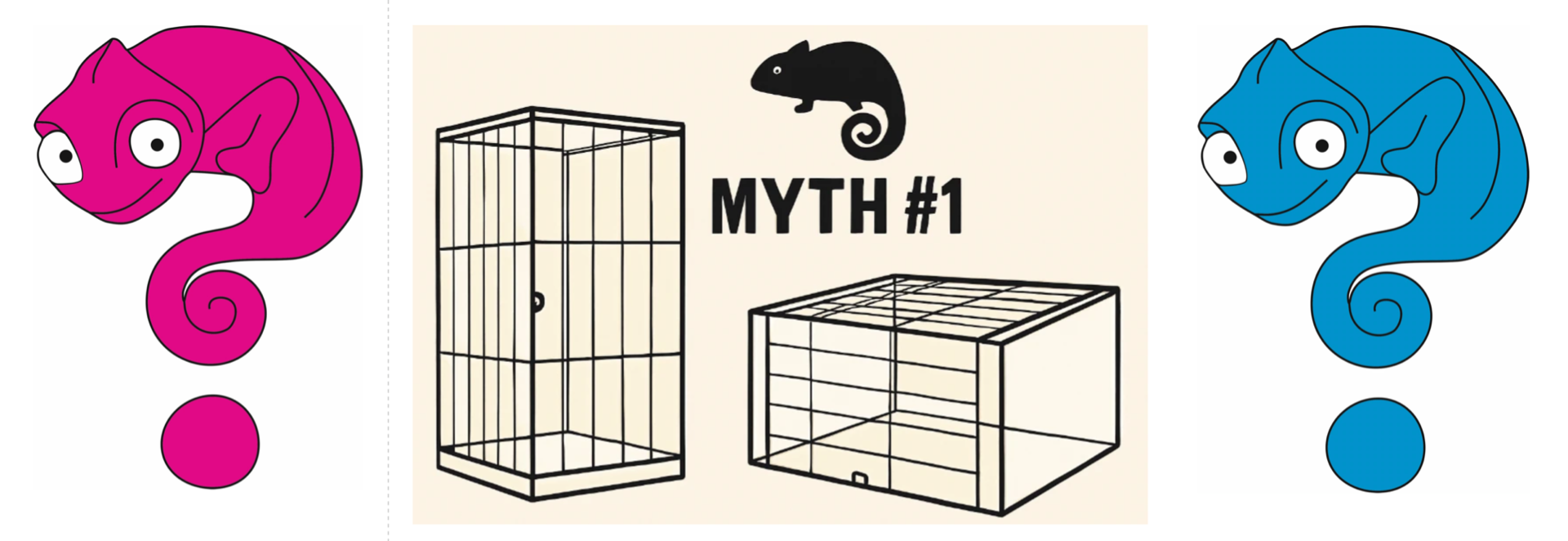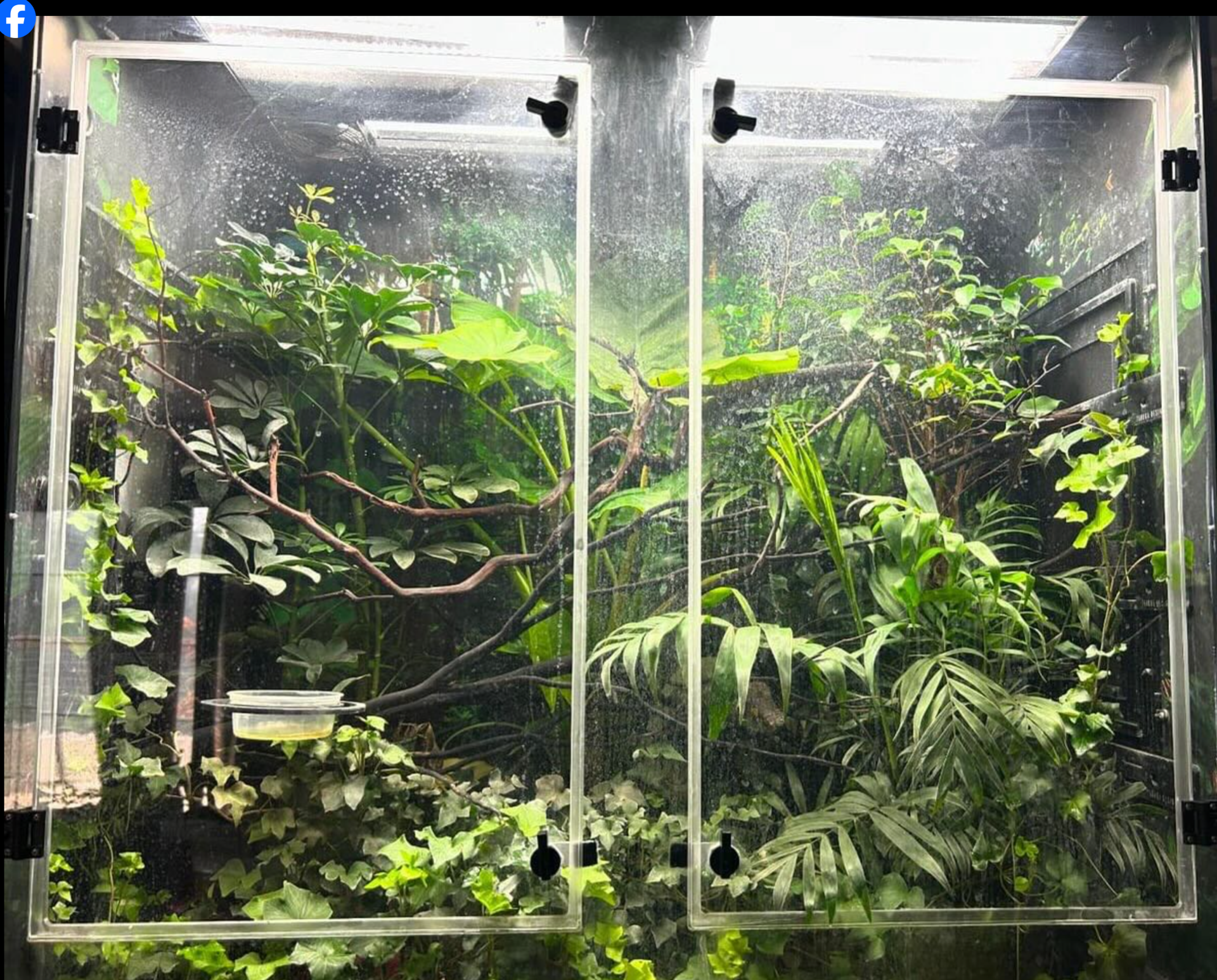Myth 1: "Chameleons Need Cages That Are Taller Than They Are Wide"

Reality: Nonsense. Dangerous nonsense.
Justification:
1. Mother Nature doesn't lie.
Chameleons are not elevator reptiles. They move horizontally—across branches, not up skyscrapers. Based on my field data, horizontal movement accounts for approximately 85% of their locomotion. Vertical movement? A mere 15%. Designing cages that prioritize height over width is a textbook case of human projection, not biological reality.
2. Captive behavior confirms it.
Most chameleons in captivity ignore the lower half of their cages entirely. That's not preference—it's dysfunction. They're avoiding the dead zones. If 50% of the cage is unused, it's not enrichment. It's architectural failure.
3. Light physics: brutal and unforgiving.
Let's talk photons. The sun is 150 million kilometers away. Your bulb? Maybe 30 cm. But light intensity drops with the square of the distance.
• 1 foot below the bulb = 1x intensity
• 2 feet = ¼ intensity
• 3 feet = 1/9 intensity
So if your cage is 3 feet deep and the bulb is mounted at the top, the bottom is a visual graveyard. Chameleons don't bask in shadows. They don't thrive in dim basements. Unless you're using side-mounted lighting or natural sunlight, anything taller than 90 cm is a black hole.
4. UVB: the invisible betrayal.
UV Index (UVI) of 2–3 is ideal for long-term chameleon exposure. But here's the catch:
• At 30 cm below the lamp, UVI ≈ 2–3
• At 60 cm, UVI ≈ hardly measureable
• At 90 cm, UVI ≈ 0
Translation: your chameleon is living in a UV desert. No synthesis of D3. No health. No excuse.
5. Plant logistics: the forgotten constraint.
Even if you ignore biology and physics, you'll hit a wall in horticulture. Finding healthy, safe, structurally suitable food plants taller than 3 feet is a logistical nightmare. Most safe, browsable plants for chameleons max out around 2–3 feet. Beyond that, you're either compromising plant health, overpaying for rare specimens, or introducing unsuitable species. The cage becomes a botanical void.
Verdict: High cages are for nothing.
Cages taller than 4 feet are functionally useless unless you're using full-spectrum side lighting or natural sun. They create dead zones, visual deprivation, UV starvation, and plant scarcity.
Recommendation:
Build 3–4 ft high cages with 4–8 ft width.
This matches the chameleon's natural movement, supports proper lighting geometry, respects plant limitations, and honors the limits of our technical capabilities. It's not just better—it's biologically correct.
